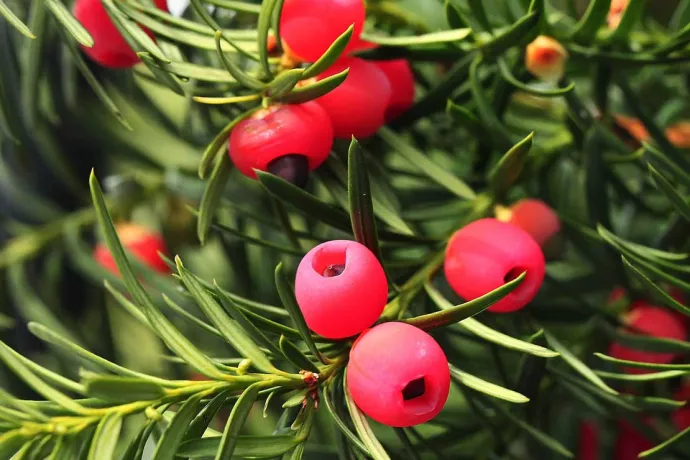
Back to Nature: UTM researchers study medicinal plants
Researchers at U of T Mississauga are shining a spotlight on medicinal plants like cannabis, Pacific yew and deadly carrot, and paving the way for future research on the most promising plant drugs.
Cell and systems biologists at UTM’s Phillips lab study chemicals known as terpenoids. Naturally produced by plants, terpenoids can help a plant attract pollinators or even deter insect attacks.
Humans encounter plant terpenoids every day, be it a whiff of pine from a Christmas tree or the tingle of mint from toothpaste, but the natural compounds can also offer important therapeutic applications for human health. Cannabinoids produced by cannabis plants can offer relief from chronic pain conditions, and paclitaxel from the Pacific yew tree are used in chemotherapy to stop cancer cells from dividing.
With hundreds of thousands of terpenoids to choose from, the study authors sought a way to gather research on terpenoids used specifically in medicine and medical research. “This literature review is an educational tool that demonstrates there are some very interesting and medically active terpenoid products,” says lead author Matthew Bergman, a PhD student in the Phillips Lab. “It brings to light the legitimate compounds that are present in, and made by, plants, and broadly looks at different classes of terpenoids that are of medical value.”
“The idea that most of our medicines come from plants isn’t new, but bringing this research to the forefront makes it more accessible to undergraduate students, other researchers and the general public,” says assistant professor and study co-author Michael Phillips of the Department of Biology. “Our paper summarizes the most recent developments, and what we consider to be some of the most promising and proven plant drugs in the terpenoid families.”
“Gaining a better understanding of the genes and enzymes involved could help science to boost plant productivity and allow science to take advantage of the plant’s natural ability in a sustainable way,” Phillips says. Extracting terpenoids can damage the plant or even endanger a species, but synthetic versions can be prohibitively expensive and difficult to produce. “If we can make use of the plants as ‘green factories,’ there is less impact on the environment to obtain these products.”
For UTM students enrolled in Phillips' undergraduate biology course, “Medicinal Plants and Human Health” (BIO368), the study will provide a springboard to future research projects with the unique plant collections housed in UTM’s teaching greenhouse.”
“These review articles are useful to remind us of the current state of research on some of the compounds closely related to what we are working on,” says Phillips. “This gives us a lot of ideas for incoming students and creates new research opportunities for students to do real research in the lab.”
The study by Phillips, Bergman and masters student Benjamin Davis was published in Molecules with support from the Natural Sciences and Engineering Research Council of Canada and UTM’s Department of Biology.
